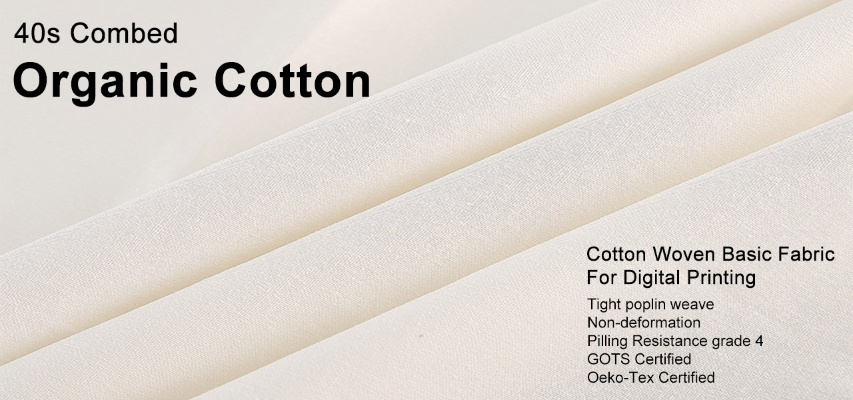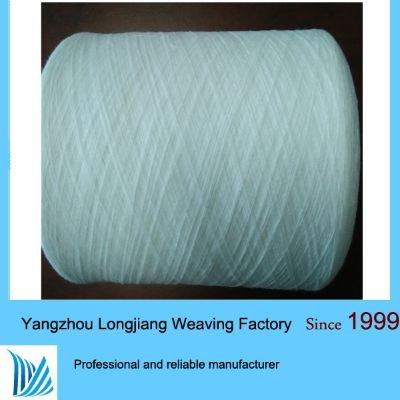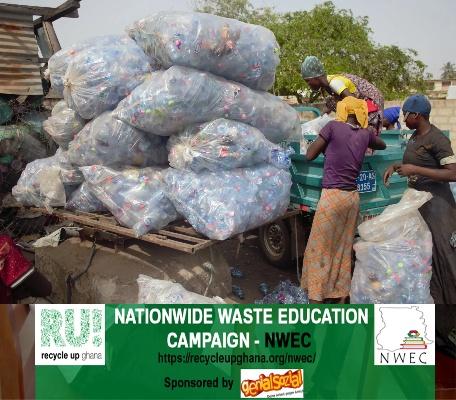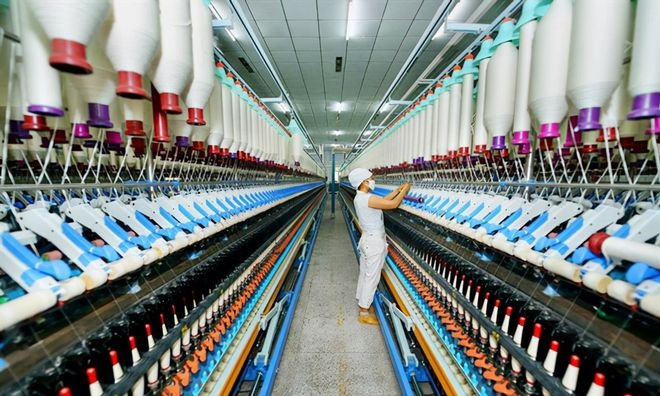The Art of Cotton Processing in Textile Factories
The art of cotton processing in textile factories is a complex and meticulous process that involves several stages. The first step is the selection of high-quality raw cotton, which is then washed to remove any impurities. This is followed by carding, where the fibers are separated from each other and sorted into different categories based on their length and strength. The next step is spinning, where the fibers are spun into yarn and then woven into fabric. Finally, the finished product is inspected for quality and packaging is done accordingly. The key to successful cotton processing lies in maintaining consistent quality control measures throughout the entire process, ensuring that every thread contributes to the final product's excellence.
Introduction: The textile industry is one of the most significant contributors to global economic growth, with cotton being a primary raw material for many fabrics. In this process, the raw cotton undergoes several stages of treatment to produce yarn, fabrics, and other textile products. Among these stages, cotton processing is crucial as it determines the quality and characteristics of the final product. This article will explore the various steps involved in cotton processing, including sorting, washing, spinning, and finishing, and how each contributes to the overall quality of the cotton. Additionally, we will highlight an example of successful cotton processing through a case study from a renowned textile factory.
Sorting: Before any further processing can take place, the cotton must be sorted according to its size, color, and type. This step is essential as it ensures that only high-quality cotton is used in the subsequent processes. In some cases, sorting may involve manual inspection or machine-based sorting systems. For instance, a textile factory might use a machine that sorts cotton based on its length and weight, ensuring that only the finest fibers are used in the production of high-end garments.

Washing: Once the cotton has been sorted, it is washed to remove any dust or impurities that may have been present during sorting. Washing also helps to remove any natural oils or waxes that coat the fibers, which can affect the texture and feel of the fabric. The type and intensity of the washing process depend on the end use of the cotton. For example, if the cotton is going to be used in a delicate fabric like a shirt, gentler washing methods may be employed to preserve the fabric's softness and breathability.
Spinning: After washing, the cotton is spun into yarn. Spinning involves passing the wet fibers through a series of rollers and drums to convert them into long, thin threads. The spinning process can be done manually or using machines. For example, a textile factory might use a modern automated spinning system that can spin up to 100 tons of cotton per hour, significantly increasing efficiency and productivity.
Finishing: The final step in cotton processing is finishing, which involves applying various treatments to enhance the appearance and performance of the yarn or fabric. These treatments can include dyeing, printing, and coating. For example, a textile factory might use a combination of dyeing and printing techniques to create vibrant and colorful patterns on a piece of clothing. Coating, such as polyester or elastane, is applied to the fabric to improve its durability and comfort.
Case Study: One example of successful cotton processing can be found at a leading textile factory in the United States. This factory specializes in producing high-quality apparel using sustainable cotton. To achieve this, the factory employs a comprehensive approach to cotton processing, from sorting to finishing.
Firstly, the factory carefully selects cotton based on its quality and sustainability credentials. They then wash and spin the cotton to ensure that only the finest fibers are used. After finishing, the cotton is subjected to rigorous testing to ensure it meets all safety and performance standards. Finally, the finished apparel is packaged and shipped to retailers around the world.
Conclusion: Cotton processing is a complex and meticulous process that requires careful attention to detail. By following a systematic approach, textile factories can produce high-quality products that meet the needs of consumers around the world. The success of this process can be seen in the case study mentioned above, where the factory's dedication to sustainability and quality has led to a thriving business and a reputation for excellence in the industry.
背景介绍
某纺织厂面临疏棉问题,为了确保生产效率和产品质量,需要进行有效的疏棉处理,本文将围绕纺织厂疏棉的主题,用英文口语化形式进行详细介绍。
疏棉过程概述
准备工作
在疏棉之前,纺织厂需要做好以下准备工作:
(1)确定疏棉的目标区域和数量,制定详细的疏棉计划。 (2)对棉花进行质量检测,确保符合标准。 (3)准备必要的疏棉设备和工具。
操作流程
(1)清理:首先对棉田进行清理,去除杂物和枯叶。 (2)筛选:使用专门的筛网对棉花进行筛选,去除杂质和不良纤维。 (3)打包:将筛选后的棉花进行打包,确保包装整齐、密封性好。 (4)运输:将打包好的棉花通过专用车辆运送到纺织厂。
案例分析

为了更好地说明疏棉过程,我们可以引入一个英文案例,以下是一个简化的案例说明:
案例:某纺织厂疏棉案例
在某纺织厂中,棉花存储区域发现大量棉花积压,需要进行疏棉处理,经过详细评估和准备,该厂采取了以下步骤进行疏棉:
确定疏棉目标区域和数量 该纺织厂首先确定了需要疏棉的区域和数量,以确保生产效率和产品质量。
质量检测 在疏棉前,该厂对棉花进行了质量检测,确保符合标准,检测内容包括纤维长度、杂质含量等,以确保疏棉后的棉花质量符合要求。
疏棉设备和工具准备 该厂准备了专业的筛网、打包机等设备工具,以确保疏棉过程的顺利进行。
详细说明
以下是关于疏棉过程的详细说明:
准备工作表格:
| 步骤 | 具体描述 | |
|---|---|---|
| 准备工作一 | 确定疏棉目标区域和数量 | 确定需要疏棉的区域和数量,制定详细的疏棉计划 |
| 准备工作二 | 质量检测 | 对棉花进行质量检测,确保符合标准 |
| 准备工作三 | 设备准备 | 准备必要的疏棉设备和工具 |
| 设备清单 | 筛网、打包机等 | 这些设备用于筛选和打包棉花 |
操作流程表格:
| 步骤 | 具体描述 | 相关工具或设备 | |
|---|---|---|---|
| 疏棉过程一 | 清理棉田 | 对棉田进行清理,去除杂物和枯叶 | 清理工具:镰刀、锄头等 |
| 疏棉过程二 | 筛选棉花 | 使用筛网对棉花进行筛选,去除杂质和不良纤维 | 筛网:专业筛网 |
| 疏棉过程三 | 打包棉花 | 将筛选后的棉花进行打包,确保包装整齐、密封性好 | 打包机等设备 |
| 运输过程 | 通过专用车辆运送到纺织厂 | 将打包好的棉花通过专用车辆运送到纺织厂进行后续处理 | 无特殊运输工具 |
结论与建议
通过上述介绍,我们可以得出以下结论和建议:
纺织厂疏棉是一个重要的生产环节,需要严格按照操作流程进行,在疏棉过程中,需要做好准备工作,确保棉花的质量符合标准,需要使用专业的设备和工具,以确保疏棉过程的顺利进行,在案例中可以看出,通过科学合理的疏棉处理,可以有效提高生产效率和产品质量,建议纺织厂在今后的生产过程中,加强疏棉管理,确保生产效率和产品质量达到最优,可以引入先进的疏棉技术和设备,提高疏棉效率和质量。
就是关于纺织厂疏棉的英文口语化内容介绍,希望能够帮助到您。
Articles related to the knowledge points of this article:
The Legacy and Innovation:The Story of Changchun Textile Factory
The Textile Factory in Jiangxi:A Case Study of the Fabric Bags



